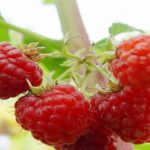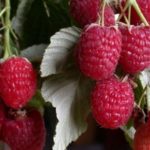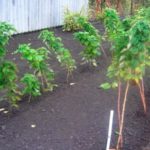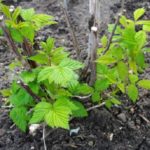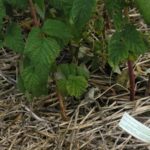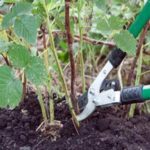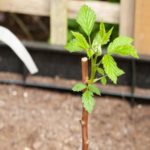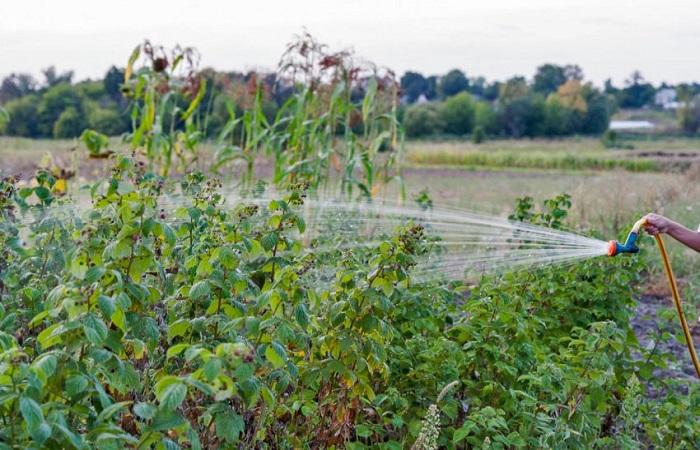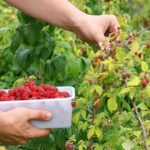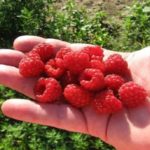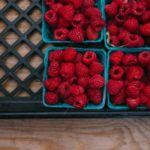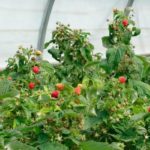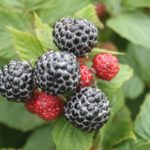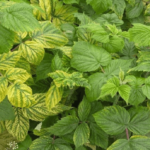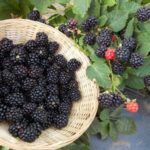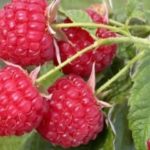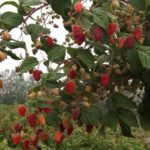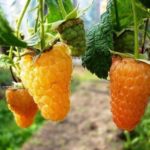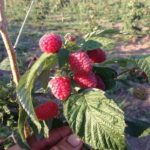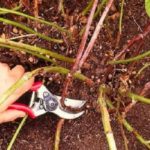The Nagrada variety is a domestic selection, bred more than 4 decades ago from the Lloyd George and Kolkhoznitsa varieties. It has become widespread due to its ability to grow in different climatic conditions and due to its high yield. Let's look at the description of the Nagrada raspberry variety, characteristics, how to plant plants and care for them. How to protect raspberries from diseases and pest attacks, how to harvest.
Description and characteristics of raspberries
Raspberry bushes of this variety grow up to 2 m, moderately spreading. The stems are massive, thick, flexible, and can be bent to the ground for winter shelter.Young shoots with a waxy coating, without pubescence, are green, becoming reddish in color by autumn. There is an average number of them on each bush. There are few thorns, located on the lower part of the shoots. The leaves are large and medium sized.
In terms of harvest time, the Nagrada variety is classified as a medium variety. In the southern regions, the berries ripen at the end of June, in the Urals and Siberia - at least 2 weeks later. Productivity – 3 kg per bush. The size of the berries is 2-6 g, the color is bright red, the surface is matte. The pulp is medium dense.
Pros and cons of the Reward variety
The best properties of this raspberry:
- resistance to viruses and fungi;
- unpretentiousness to climate;
- bright taste and aroma of fruits;
- productivity.
Disadvantages: susceptible to mites and shoot gall midges.
Landing
The place for planting raspberries Reward should be chosen sunny and open, so that the plants can be illuminated by the sun throughout the day. Raspberries growing in the shade will not be able to produce a large harvest. As for humidity, you should not plant raspberries where water stagnates, since they do not like high humidity. The soil reaction should be neutral. In terms of mechanical composition, the crop prefers light soils, sandy loam or loamy, well fertilized, loose.
Planting sequence: straighten the roots of the seedlings, place the raspberries in the hole, sprinkle with earth and compact it.Water if the soil is dry. Sprinkle the root area with mulch of straw, hay, or sawdust. Or lay black agrofiber on the rows.
Care
After planting, you need to make sure that the soil does not dry out; at this time, the roots need moisture. After rooting, the bushes can be watered less frequently - once a week. Pour water under the root, after watering, when the soil dries, loosen it. If mulch is laid, you can loosen it less often. You also need to weed the grass near the bushes and between the rows.
It is recommended to grow the Nagrada variety on a trellis; this method has several advantages over the traditional one: the shoots do not break, as they are fixed on the trellis, are evenly illuminated by the sun and are better ventilated. Caring for the bushes is also simplified: it is easier to walk between them, water, feed, and trim.
In autumn or early spring, the time comes for pruning: damaged, dry, old shoots are removed from the bushes. Young ones are left up to 6-8 pieces. on an adult bush. The tops are shortened, causing the shoots to begin to branch. Everything cut is taken out of the raspberry garden and burned, especially those shoots that have traces of disease.
How to protect a plant from diseases and pests
Plants of the variety can suffer from anthracnose and mycoplasmosis. To prevent diseases, it is necessary to carry out preventive spraying with fungicidal preparations before the period when the manifestations of diseases are most likely.
If the infection has already spread, you should use the drug in a medicinal dose, spraying several times until the symptoms of the disease disappear. When using chemicals, you should choose ones that do not have a long waiting period, especially if there is little time left before harvesting.
Features of harvesting and storage rules
The berries are collected after they are ripe. Ripe berries turn red and acquire a pronounced aroma. The ripest ones make excellent preparations and sweet homemade preserves. Dense, unripe fruits can be stored in the refrigerator. Pick carefully so that the berries do not bruise and place in clean, dry containers.
Raspberry Reward can be stored in the refrigerator for 2 weeks, the berries remain as tasty, aromatic and attractive in appearance as they were at the time of picking. The berries can withstand transportation and can be transported for sale if the variety is grown for sale.
The Nagrada variety is not new, but is able to successfully compete with recently bred ones. Gardeners will be interested in it due to its good adaptation to the Russian climate, productivity, resistance to disease, and low maintenance requirements. In terms of agricultural cultivation technology, it is no different from many other crop varieties.


